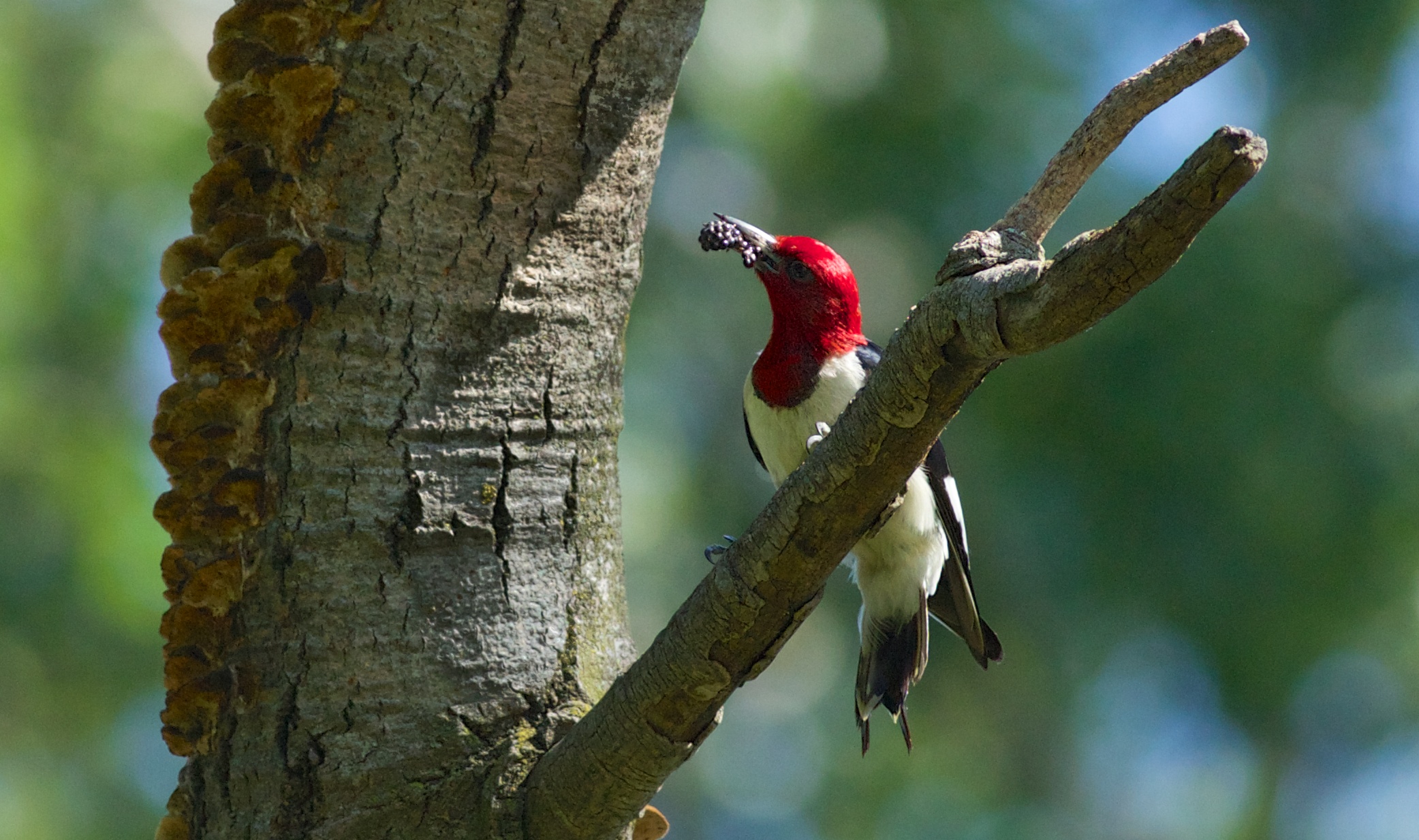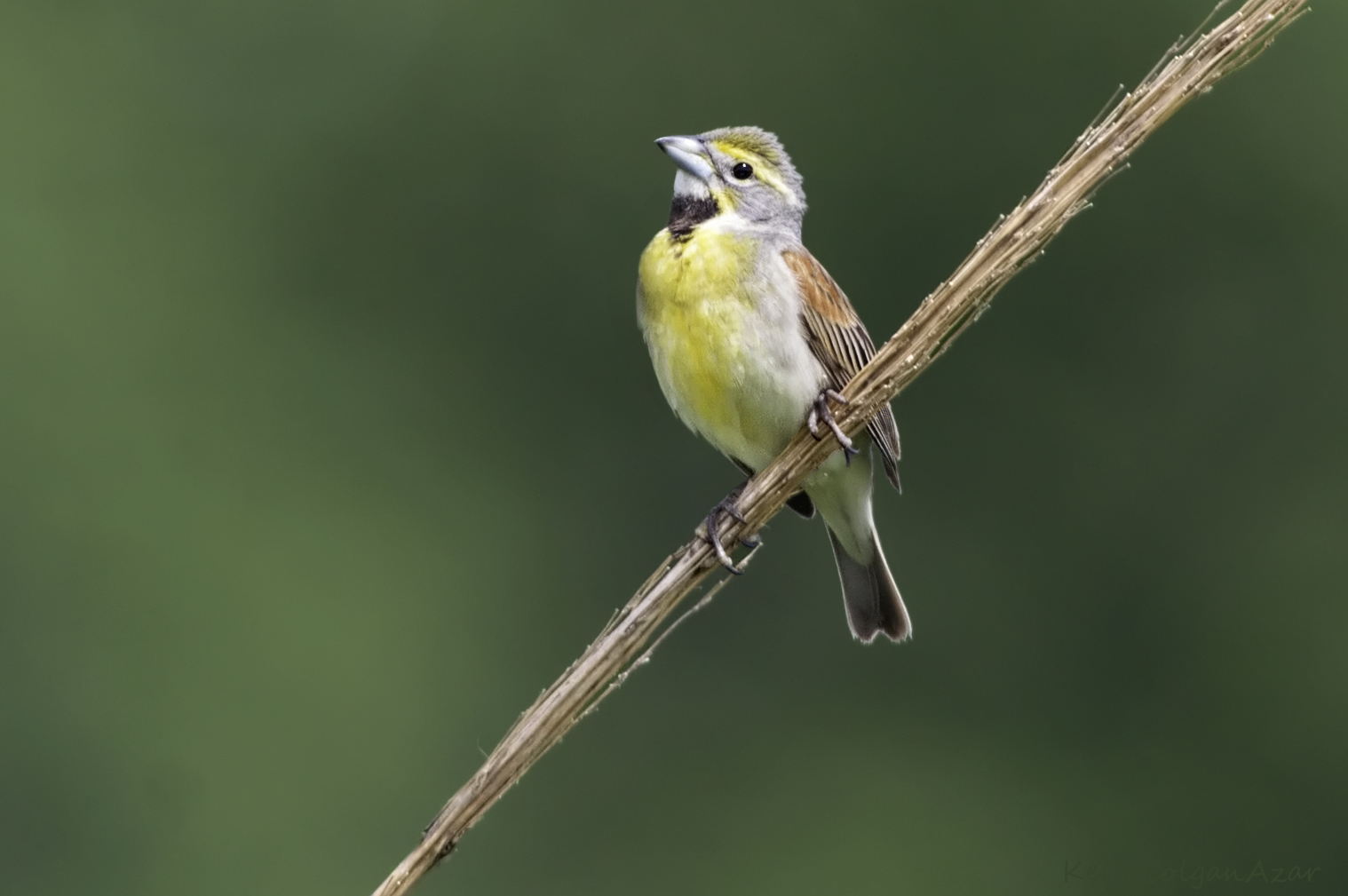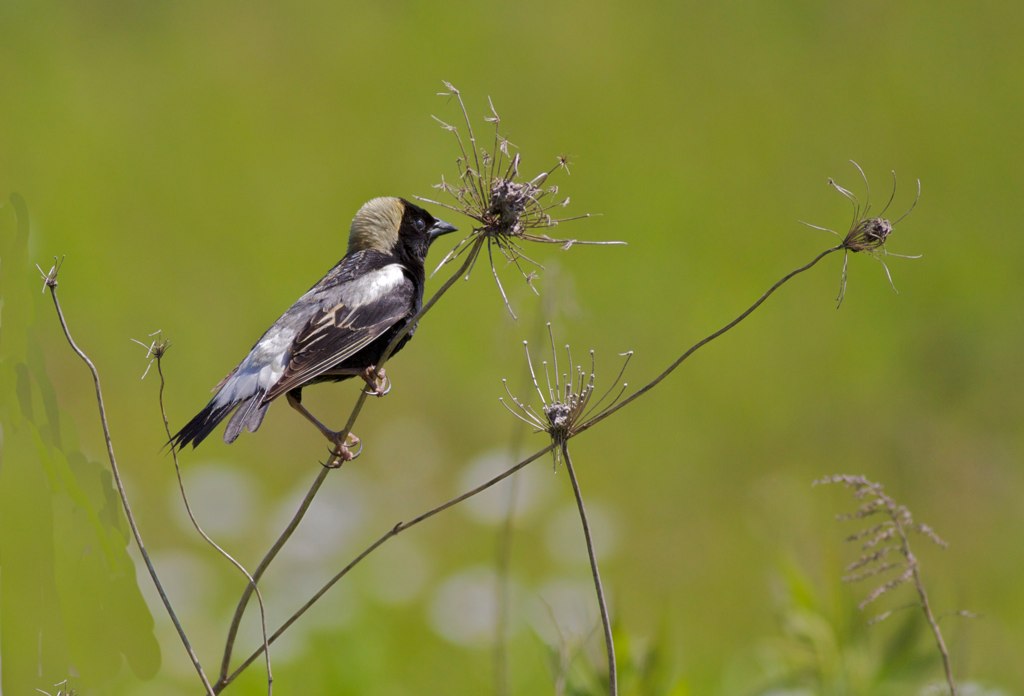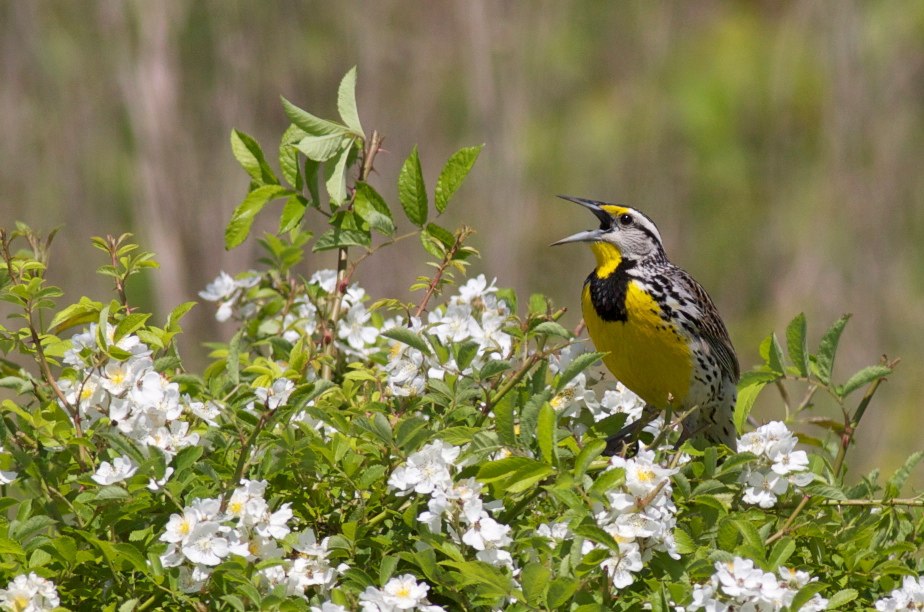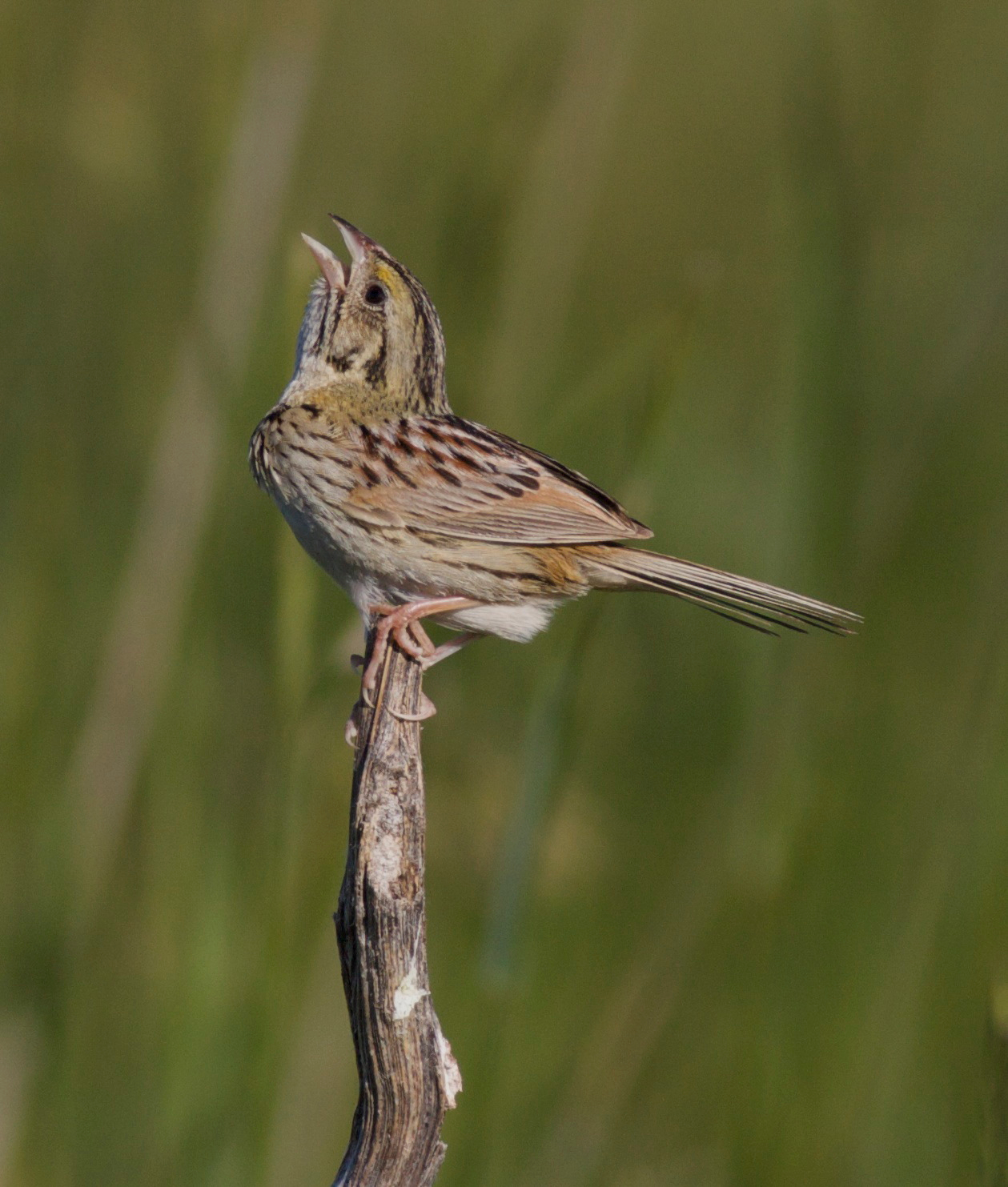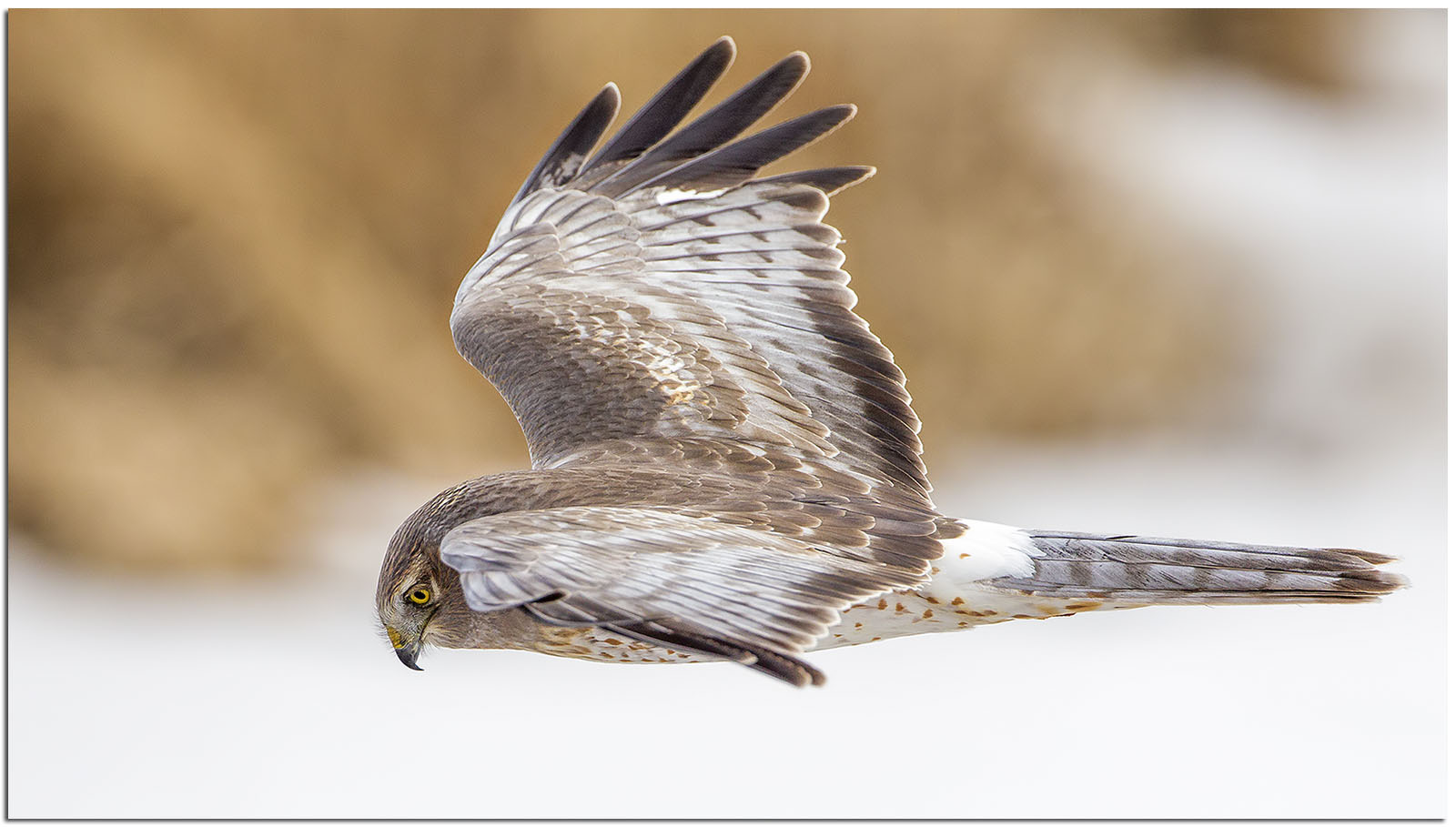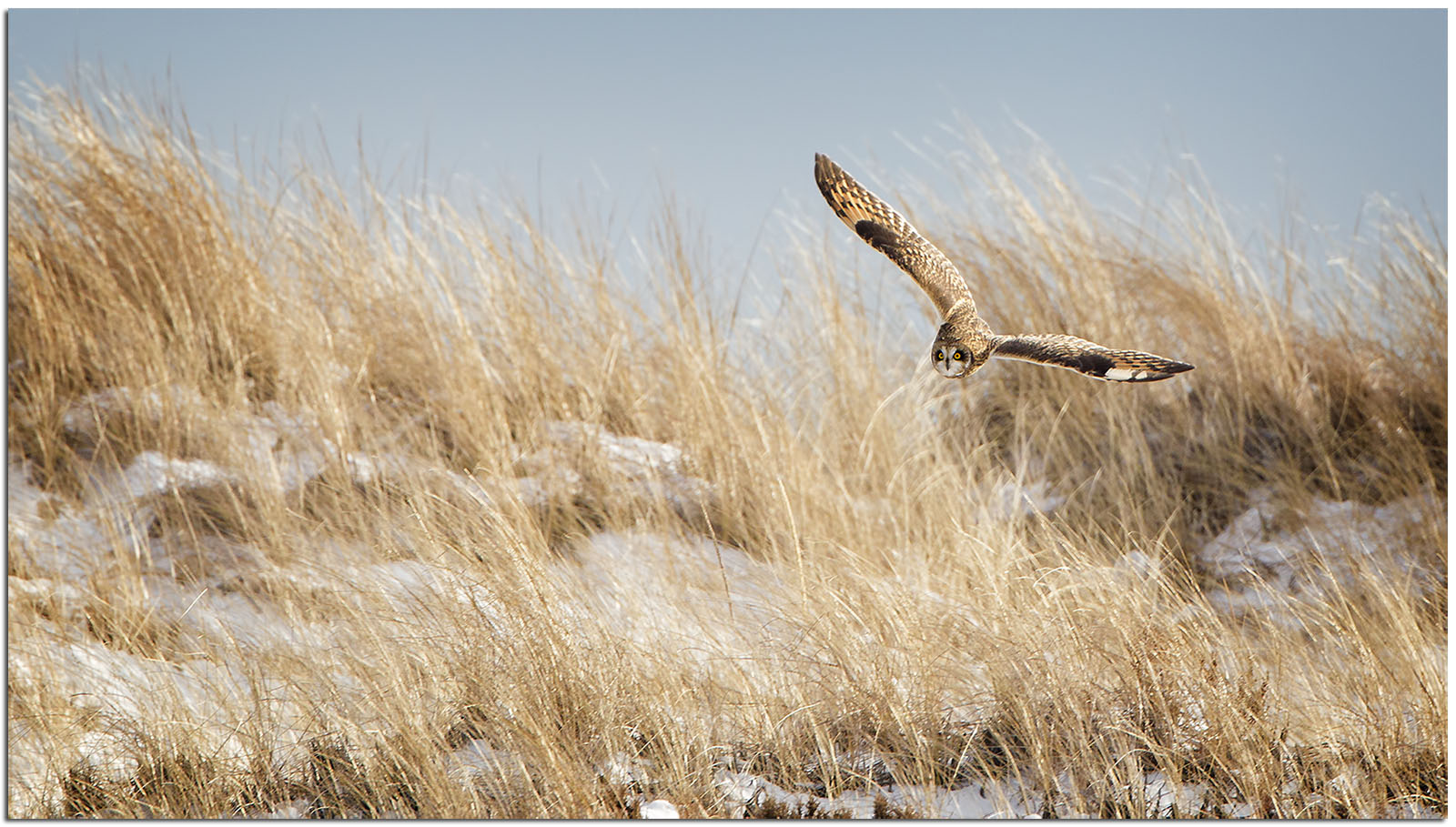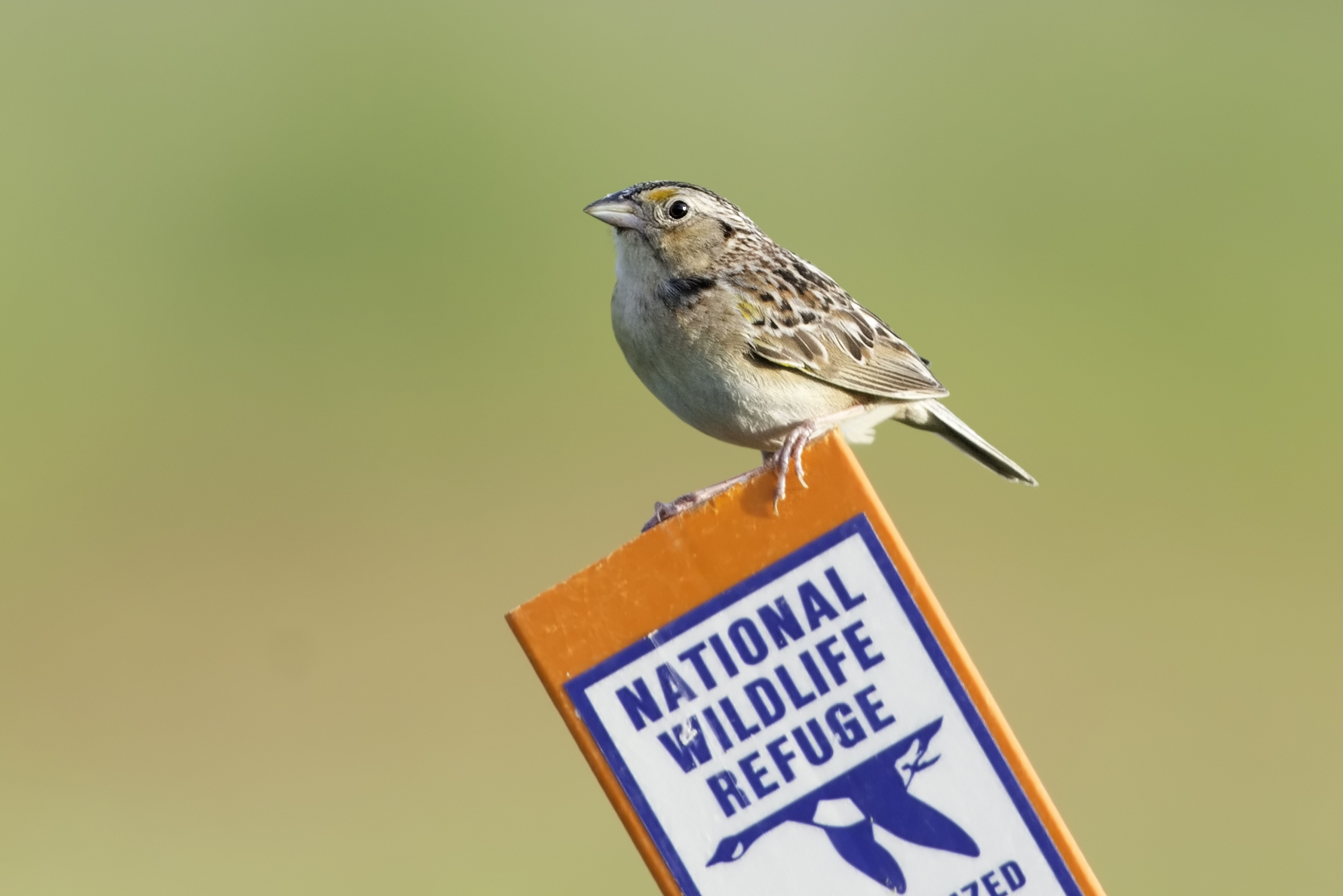Mama pileated is bringing home the bacon... errrr, bugs for her young nesting in a tree at Madison Audubon's Otsego Marsh. Photo by Mark Martin
Mark Martin and Madison Audubon board member John Shillinglaw were touring the prairies at Goose Pond Sanctuary on August 25th. They had just left Sue Ames Prairie and were going past the Hopkins Road Prairie when Mark spotted a large crow-sized bird flying over Hopkins Road Prairie. He excitedly said to John what is that bird? John must have been a Boy Scout because he was ready with his field glasses around his neck and cried “pileated woodpecker”! It is nice when two people confirm the same species with confidence.
This is a new bird for the Goose Pond Bird List. It is not often we can add a bird to the 250-plus bird checklist, and this brings the tally of woodpecker species up to seven. We learned that these large woodpeckers have a home range of around 300 acres that must include a lot of wooded land.
With our lack of trees, woodpeckers are uncommon at Goose Pond. The last yellow-bellied sapsucker was recorded in 1991. Last year we saw a red-headed woodpecker fly past the back yard, our first sighting in 38 years! In the past two years, birders have observed northern flickers, downy, hairy, and red-bellied woodpeckers. The downy woodpeckers are sometimes seen in winter in our food plots looking for insects in the stems of corn, sunflowers, and sorghum.
A pair of pileated woodpeckers navigate the entryway of a nest at Otsego Marsh in Columbia County. Photo by Richard Armstrong
In 1991, Sam Robbins wrote in Wisconsin Birdlife that the pileated woodpecker “is a rare resident in southeast Wisconsin” and “is uncommon in the western edge of Columbia County.” Goose Pond Sanctuary is located in both.
The current breeding bird atlas shows eight atlas blocks in Columbia County with nesting confirmations of pileated woodpeckers compared to two blocks in the first atlas conducted 1995 to 2000.
Pileateds are increasing in southeast Wisconsin as forested cover increases. Atlasers in Dane County have found pileateds in Madison at the UW Arboretum, Owen Park, and at the Madison School Forest just southwest of Madison.
We wonder if someone will see this bird again in our area. It pays to always be observant and ready with your field glasses when out birding, especially at Goose Pond Sanctuary.
Written by Mark Martin and Susan Foote-Martin, Goose Pond Sanctuary Resident Managers




